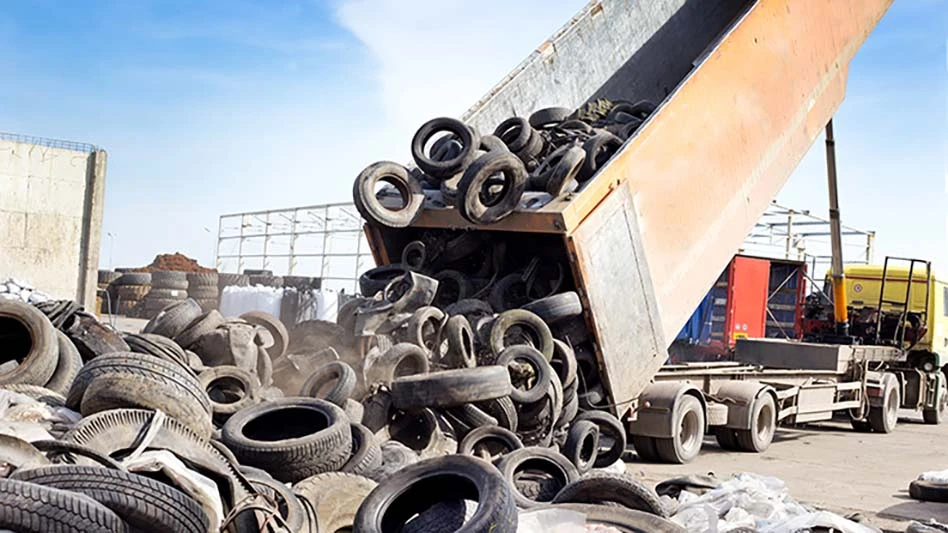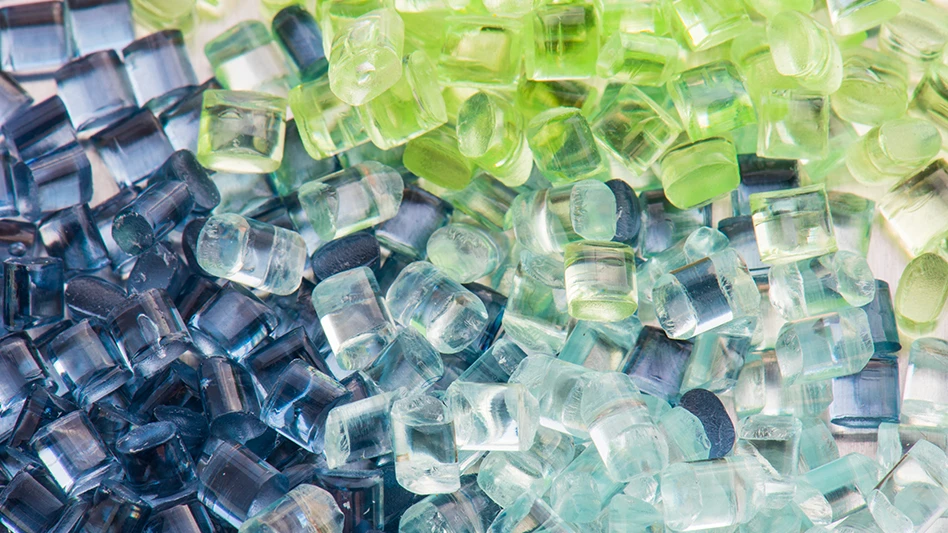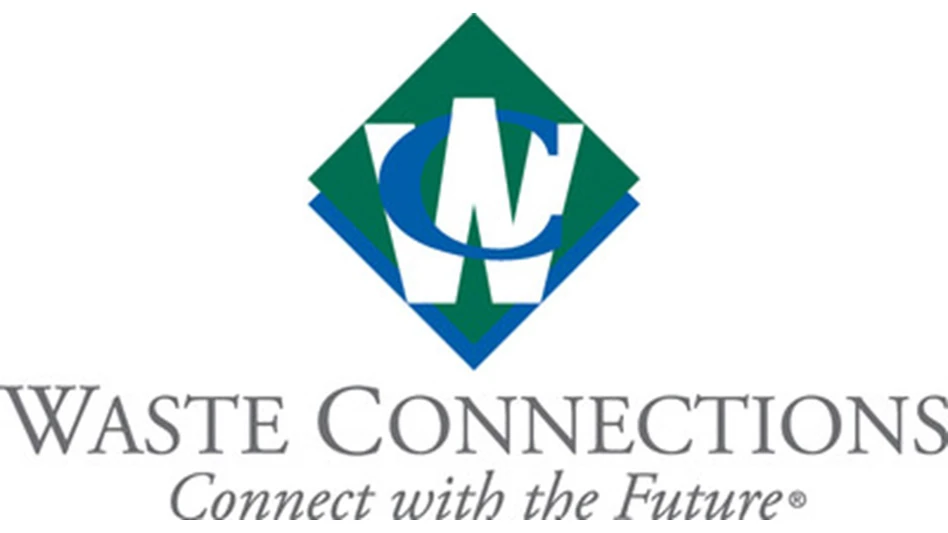Ever-increasing quality requirements, as well as transport costs, keep glass recyclers challenged.
When all is said and done, the quipsters say, usually more is said than done. In the glass industry today, industry watchers are saying there are three major problems to be solved: changes in the market infrastructure, including the cost of transportation and continuing low market prices; changes in facilities, with the growth of third-party processors; and the issue of quality control, as ceramic and tempered glass contaminants are increasingly a problem.
All of that said, there is not a lot actually being done, unless one considers the continued growth of third-party processors. However, there are several projects afoot which do promise local outlets for recycling glass in remote or rural areas.
A quick look at the recent history of the glass recycling industry shows that, years ago, glass firms put in their own processing lines, taking in material from consumers and dealers at the back door. This did not work out, however, and now most companies are outsourcing or have leased their equipment to third parties.
There is change coming in the processor industry’s infrastructure as smaller processors are attracted to sell out to larger companies. While a lot of small firms will survive, the industry giants are trying to grow as rapidly as possible and in as many markets as possible. Generally, the best way for them to do that is to gobble up smaller firms.
However, at the very lowest end, small companies — $30,000 or $40,000 firms that process 20 tons a day — are springing up everywhere and probably will enjoy at least modest success. Generally they are trying to care for a local problem or situation. But even taken all together, their output hardly would make a blip on the national market.
"Glass manufacturers, if they had the choice, would like to deal with one processor," says Charles Porta, president of Container Recycling Alliance in Chicago. "It is easier for them to keep on top of quality and get a better price. For that reason alone, I don’t see a lot of new, larger processors starting up."
Porta says the bottom line reason behind all of the acquisition is simply good business logic. "The more locations you have, the more return you get." An expanded base allows a firm to serve many markets and negotiate better with buyers.
Since nobody forecasts major change or upheaval in the market, the industry seems to be focusing on basic business practices. Consider that the new Director of National Recycling at Anchor Glass, Tampa, Fla., Clay Mynard, is an attorney. He is concentrating less on the public relations angles of glass recycling and consumer awareness, and more on developing quality standards for the cullet purchased and putting the industry’s agenda on the front burner in the legislative and regulatory arena.
RECYCLING RATE UP
American consumers are recycling glass containers at a faster rate than ever before, according to data recently released by the Glass Packaging Institute. The increase in the 1994 glass container recycling rate to 37 percent marks seven consecutive years of recycling rate increases. Furthermore, the increase indicates that the glass container industry’s efforts to build a sustainable, national glass recycling infrastructure are proving successful.
"As consumers continue to recycle more and more glass, it relieves the burden on our nation’s landfills while significantly reducing the need for virgin materials," says Lewis D. Andrews, Jr., president of GPI.
Andrews says that the 37 percent glass recycling rate reflects the percentage of containers actually being recycled by manufacturers, not just the amount being collected. Furthermore, the glass container recycling rate reflects all jars and bottles sold, not just a specific segment of the container market. "We found that recycled glass (or cullet) is not only being made into new bottles and jars, but is also being used to an increasing degree for secondary markets such as fiberglass and glassphalt," Andrews says.
That’s not enough for industry, however. "We need more quality, post-consumer cullet," Anchor Glass Container’s Kathy Richter told ISRI’s meeting in Las Vegas last March. "Our plants aren’t getting enough and we want to buy more. At glass container plants, we want color-sorted, contaminant-free post-consumer bottles and jars." Currently, there are 69 glass container plants in the U.S., each using cullet to make new bottles and jars.
"As more and more communities come on-line with curbside recycling programs, we hope to see continuing growth in the volume of glass containers that are recycled, " says Andrews. "However, continued growth is threatened by the failure of many material recovery facilities to produce high quality cullet," he adds.
QUALITY CONCERNS
Therein lies a rub. One might expect a better sort job by professionals than from homeowners. But for cost reasons, it is cheaper in many locations to pick up commingled product. MRFs also tend to send a lower volume of glass material to the plants. A lot more of what they process ends up going off the end of the conveyor.
If recycled glass is not color separated and contaminant free, the material cannot be used in making new glass containers. "Recycled glass, like any raw material, must meet manufacturer specifications," Andrews says.
"What we want to buy is color-sorted, contaminant-free container glass," Clifford Klotz, American National Can, told ISRI. "This is one reason that we favor curbside separation instead of commingled collection for municipal recycling programs."
"I think the quality of what we get today is as good, or better, than it was when we did it ourselves," says Paul Hummel, manager of recycling for Ball Glass, Muncie, Ind.
While he would argue that the best quality they ever got was from source-separated shipments, he feels the quality of materials coming through the MRFs is, by and large, "decent." However, he credits much of that high level of quality to efforts to educate the public and others who contribute to the recycled waste stream before the glass gets to the MRF. He says that third-party processors are demanding better quality and that quality is turning up throughout the process. Like others in the glass industry, his main regret with MRFs is the loss of volume of materials coming through.
Firms that use a lot of cullet in mix report quality complaints from manufacturers who get defects. There is no question that plants will continue to use cullet — they are oriented to performance goals, air-quality goals, and economic benchmarks that dictate cullet be a part of the mix. However, the recycled materials are competing with a product that is literally dirt cheap – sand. The most expensive material in glass is soda ash, but it represents a tiny part of the overall cost of production.
COLORED GLASS
There was much ballyhoo a year ago, especially in the New Jersey market, about the problems of recycling green and amber glass. Beer, especially, comes through import channels in colored bottles. The core of the problem was material leaving its home country and the importing nation being stuck with the recycling hassles. Thus, major complaints were raised about beer bottles coming in from Canada and Europe.
Following a series of meetings with the Coalition of Northeastern Governors, most of the difficulties in New Jersey were ironed out. New Jersey, and the other CONEG states, were concerned mainly about the displacement of colored glass from one location to another.
For instance, a lot of the green glass produced is used by the wine industry in California and elsewhere on the West Coast. But the cost of shipping empties back West, where the demand for green glass for recycling is high, was prohibitive. Both the fiberglass insulation and the wine bottle industry crave the product. Among the efforts being made to get glass out of the New Jersey market are a take-back scheme by some Canadian firms and the shipment of bottles back to Europe.
Porta says one of the challenges with mixed glass is identifying end markets for the material and finding an economical way to handle the product.
"Fiberglass is a decent market in some regions, but still is uncertain outside of the isolated pockets where use is heavy," he says. He also predicts a breakthrough in sorting technology that will lead to other uses.
"While there has been experimentation in mechanical color sorting, no current cost-efficient process exists. Cullet that is color-mixed has relatively little value and generally ends up in secondary uses such as roadway sub-base and landfill cover," Klotz says.
"Mixed glass is a major problem that will not go away," Porta agrees. "We may as well find a way to take advantage of it."
Also, blue glass is beginning to show up in some shipments. It is increasing in popularity as bottled water comes into vogue. Generally, blue should go into the green bin unless a recycling center has large volumes. In any case, experts recommend recyclers check with their end market.
NONTRADITIONAL USES
Perhaps the one non-traditional use of cullet that gets the most attention is the development of glassphalt, mixed in with asphalt during the construction process where it becomes part of the highway road bed. Hawaii recently passed a law that set a minimum three percent content level for recycled glass in all roadways. Florida also is considering glassphalt, and has completed a number of studies on the material.
Glass manufacturers, however, do not see glassphalt as a competitor. In fact, in many cases they see it as an added benefit because it helps boost the volume of glass that goes toward meeting state recycling levels in "rates and dates" legislation.
Much of the material which would be used in glassphalt would not be recyclable, anyway, due to poor quality. Perhaps the only major concern heard in industry circles is that people will stop sorting glass if they perceive the glassphalt market as a typical outlet.
Florida studies examined programs that would use up to 15 percent mixed glass in its glassphalt. The glassphalt option would be available for low-speed, single lane highways, at least to start. "At that rate, it would require 60 tons of glass per single lane mile of construction," says David Baker, regional director for the Glass Packaging Institute’s Southeast Office. "That gobbles a lot of mixed cullet."
It also presents a "Catch-22." Coming up with 60 tons of glass cullet per mile would quickly exhaust just about any local market for recycled glass, including the good material. That’s splendid from one point of view, but it also would make it tough to sustain a market demand or to amortize the needed processing and construction equipment.
Other uses for glass include: using it as a filtration medium in septic systems or in city water plants; as a polymer filler, perhaps in tires; as a hydroponic growth medium; for producing glass beads for highway reflectors or for paint; or for use as an abrasive in sandblasting.
ECONOMICS
"There is a real shortage of material to the industry," Hummel says. "It is not a question of bringing more material in. The MRFs are eroding the amount of material going to industry. They are diverting glass to secondary markets who want a lower value product."
However, he sees prices holding. "The industry is paying at or above batch cost now," he notes. "Demand and price both should stay steady."
Porta agrees. "There is not enough glass available now and will not be for a long time," he says. But, he does not see any major increases in price. "The way the markets are now is better. Glass does not fluctuate the way other commodities do. It may not go up, but it will not be going down, either. It’s better when you can rely on the price."
More worrisome is the loss of market share by the glass bottle industry to plastics.
That, however, is a primary-industry concern and the recycling marketplace will only feel the impact later in the cycle.
The author is an environmental writer based in Strongsville, Ohio.

Explore the June 1995 Issue
Check out more from this issue and find your next story to read.
Latest from Recycling Today
- Lautenbach Recycling names business development manager
- Sebright Products partners with German waste management equipment company
- WasteExpo transitions to biennial format for enhanced experiences
- Study highlights progress, challenges in meeting PCR goals for packaging
- Washington legislature passes EPR bill
- PureCycle makes progress on use of PureFive resin in film trials
- New copper alloy achieves unprecedented high-temperature performance
- Gränges boosts profits and sales volume in Q1 2025






